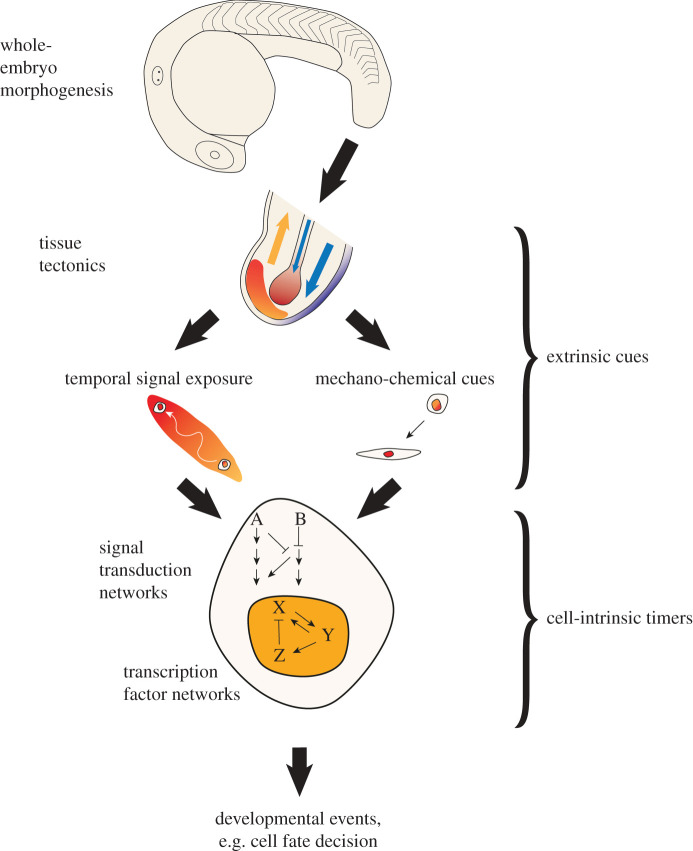Figure 2.
Mechanisms of downward causation in development. This schematic shows the different ways in which morphogenesis can influence cell-intrinsic transcription factor networks and ultimately the timing of developmental events. This can occur both via mechano-chemical cues (as described elsewhere—see text for references), and, as we propose here, through the modulation of temporal signal exposure. As whole-embryo morphogenesis occurs (top panel), signalling and responding tissues move relative to one another (tissue tectonics, second panel). Thus, the exposure of the responding tissue to signals changes over time. Signals feed into cell-intrinsic signal transduction networks that ultimately converge on transcription factor networks. In this way, extrinsic cues interface with cell-intrinsic timing mechanisms via tissue tectonics.

